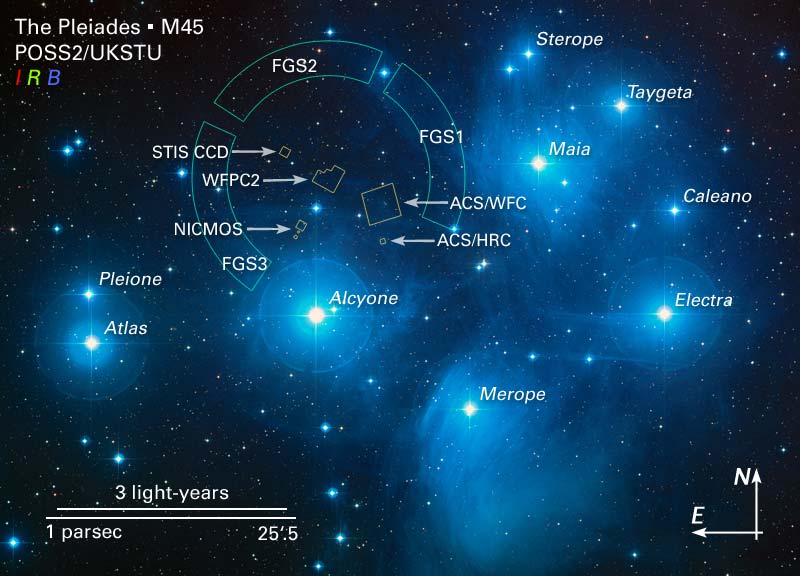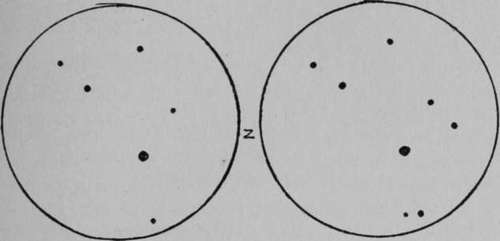http://www.bbastrodesigns.com/pleiades.html wrote:
COUNT THE PLEIADES ...by Mel Bartels
<<The Pleiades Star Cluster, known as Messier 45, often called the "Seven Sisters", is the most famous galactic star cluster in the heavens, revered from antiquity. According to Richard Allen's "Star-Names and their Meanings", the Pleiades seem to be the among the first star mentioned in astronomical literature, appearing in Chinese annals of 2357 B.C. Job is thought to refer to them twice in his word Kimah. The Egyptians called them Chu and said that they represent the goddess Nit. Burnham's Celestial Handbook relates an interesting American Indian legend connecting the Pleiades to
Devil's Tower. The Kiowa say that the Tower was raised by the Great Spirit to protect seven Indian maidens pursued by giant bears, the maidens afterwards being placed in the heavens for protection, and the bears' claw marks seen today in the vertical striations on the Tower's sides.
Burnhams states that, "There are at least 20 star in the group which might be glimpsed under the finest conditions, having a brightness just below usual unaided-eye range;" This is true, but the next clause is not true, where he goes on to say, "the crowded massing of the stars, however, makes this impossible."
Actually, the star separations are far greater than the unaided-eye resolution of 1-2 arc minutes. You can test your own unaided-eye resolution by looking at
Epsilon Lyrae. You should see two adjoining specks of light. If you see clear black inbetween, your resolution limit is closer to 1 arc minute, if you see the specs as an elongated star, you resolution limit is closer to 3 arc minutes. The average resolution is supposed to be 2 arc minutes, but I have found when asking people at star parties to tell me what they see, most of them do not see clear black inbetween, indeed many do not see an elongation.
Probably the biggest problem in going for faint stars in the Pleiades is the nebulosity. In good dark skies, you should see the Pleiades enveloped in a fairly bright solid glow.
The Pleiades are embedded in an interloper cloud of gas, not their birth gas. This is similar to the problem of the central star in the Ring Nebula, where it too is embedded in a faint glow of the ring's interior. The central star in the ring is supposedly at 15.5 to 16 magnitude, but it is more difficult to see than a stand alone 15.5 star. You can see faint stars in nebulosity, but it takes more effort and time.
In dark skies, you should catch 13-14 stars, in very dark skies, up to 17 stars, and in exception skies over the years, more than 20 stars.>>
 M45: The Pleiades Star Cluster
M45: The Pleiades Star Cluster




